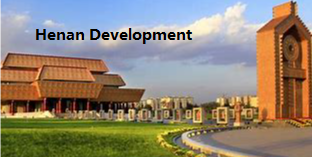Policy banks key to stable credit growth
Recently, the executive meeting of the State Council, the nation's Cabinet, again highlighted making good use of policy-backed and developmental financial instruments and timely allocation of policy banks' new lending quotas. In mid-May, a monetary and credit situation analysis conference highlighted the decision to stabilize credit growth, urging the China Development Bank and other policy banks to increase efforts in cooperation with commercial banks "to endeavor to stabilize the economy".
In June, the executive meeting of the State Council announced an increase of 800 billion yuan ($116.8 billion) in policy banks' lending quotas and 300 billion yuan of financial bonds to replenish major project funds. Moreover, it repeatedly called on more capital investment and financial support for key areas and weak links.
Fund supplement strategies such as policy financial bonds, pledged supplementary lending (PSL) and special construction bonds will support policy banks in their related functions. Policy financial bonds tend to increase financing by supplementing funds for countercyclical adjustments amid larger economic downward pressure.
PSL, as the central bank's targeted supplementary funding channel, significantly increased its volume to support shantytown renovation loan issuances. In addition, special construction bonds for specific purposes are seen as potential financing modalities, and about 2 trillion yuan was issued from 2015 to 2017 to support the construction of major national projects. This can also be seen in CDB statements, with debt certificates issued accounting for more than 70 percent of liabilities by the end of 2021, and relatively little borrowing from the government and other financial institutions, accounting for about 3 percent.
As an important supplement to broad finance, policy banks are not subject to budgetary constraints, and debt space determines asset size, which provides them with more room and flexibility. Post-epidemic fiscal expansion raised debt accumulation and interest payment pressure. For example, special bonds' interest payments accounted for a record 4.2 percent of government-managed fund expenditures in 2021. Also, land finance managed to constrain the effectiveness of fiscal spending. However, compared with fiscal funds, policy banks do not face difficult budgetary constraints on their assets and their capital adequacy ratios are higher than the regulatory red line. In addition, they are not restricted by other regulatory indicators applicable to commercial banks, thus remaining relatively more flexible.
Among financial policy institutions, with the largest asset size and wide business scope, the CDB is the "backbone" of long-term economic development. Policy-backed financial institutions mainly include the CDB, the Agricultural Development Bank of China, the Export-Import Bank of China and China Export & Credit Insurance Corp (Sinosure), among which CDB has the largest total asset size of over 17 trillion yuan, while the ADBC and the EIBC have 8 trillion yuan and 5.5 trillion yuan, respectively, and Sinosure is relatively small, having less than 0.2 trillion yuan. In terms of positioning and business scope, the CDB focuses on fields including infrastructure, basic industries and pillar sectors, industrial upgrading and structural adjustment, coordinated regional development and the Belt and Road Initiative. The ADBC supports areas related to agriculture, rural areas and farmers, including rural infrastructure, shantytown renovation and poverty alleviation. The EIBC and Sinosure serve mainly trade businesses.
Looking back at history, policy banks tend to expand their balance sheets to make countercyclical adjustments and provide financing support for key areas amid downward economic pressure. Unlike commercial banks, policy banks usually increase credit allocation and play a countercyclical role when faced with an economic downturn.
They support different areas at different stages. From traditional infrastructure and shantytown renovation to "new infrastructure", policy-backed financial institutions expect to achieve a smooth transition of the real economy while supporting economic transformation. After the financial crisis, policies focused on expanding domestic demand. The CDB strongly supported infrastructure construction such as water conservancy and environmental and road transportation. Since 2011, construction of high-speed rail, intercity railroads and urban rail transit accelerated, and urban and railway transportation loans increased by more than 75 percent compared with 2010. Between 2014 and 2018, large-scale shantytown renovation was promoted across the country, and related loans expanded significantly from scratch, accounting for 26 percent of total loans. In recent years, loans for manufacturing, urban transportation and other sectors increased dramatically, with proportion to total loans rising stably from about 10 percent to more than 13 percent.
Since mid-2022, measures such as increasing policy banks' lending quotas and issuing financial bonds have been implemented, mainly in fields including infrastructure and scientific and technological innovation. Policy-backed and developmental financial instruments, set up by the CDB and the ADBC, respectively, have a total of 300 billion yuan, mainly to supplement capital holdings of major projects but not more than 50 percent of the total capital. These funds focus on infrastructure such as transportation, water conservancy and energy, and industrial projects that cover cutting-edge and emerging industries, as well as on stabilizing weak links in industrial chains. Meanwhile, three major policy banks added a total of nearly 1.6 trillion yuan in new loans in the first half, mainly in fields including infrastructure, green development and environmental protection.
Experience shows that some credit resources are closely linked with real estate and other areas. In fact, since last year, some policy banks have been successively issuing their loans to governmental-subsidized rental housing, shantytown renovation and other areas. During the period from 2014 to 2018, to support the large-scale shantytown renovation, single-year new shantytown reconstruction loans once exceeded 1 trillion yuan. With the gradual scaling down of shantytown rebuilding targets, related new financing has also declined significantly. When the large-scale shantytown reconstruction is complete, new loans in related areas may be reduced. Actually, more cases of the CDB increasing financing support to the real estate sector have been seen since last year, and even more for the reconstruction of old urban communities and affordable rental housing loans.
Limited by project leverage and shantytown reconstruction's future space, policy financial institutions' influence on infrastructure investment and real estate remain uncertain. Since the last round of large-scale shantytown reconstruction, overall demand for shantytown reconstruction nationwide has been significantly digested, and a few provinces' increased input for shantytown renovation may help keep local real estate markets stable. Although policy financial institutions have limited influence in boosting overall demand, manufacturing, science and technology innovation and green areas may be worthy of attention in the second half of the year in loan allocations.
All in all, we came to three conclusions following some research. First, as an important supplement to broad finance, policy financial institutions' function of promoting "stable growth" has caught attention recently. To support policy banks, policy financial bonds, PSL and special construction bonds are the main methods to supplement funds.
Second, policy banks tend to expand their balance sheets to make countercyclical adjustments and provide financing support for key areas amid economic sluggishness. They support different areas at different stages. From traditional infrastructure and shantytown reconstruction to "new infrastructure", such institutions expect to achieve a smooth transition of the real economy while supporting economic transformation.
Third, since mid-year, measures such as increasing policy banks' lending quotas and issuing financial bonds have been implemented, mostly targeting infrastructure, scientific and technological innovation and other fields. Limited by project leverage and shantytown reconstruction's future development potential, institutional influence on infrastructure investment and real estate remains uncertain.





















































First, please LoginComment After ~